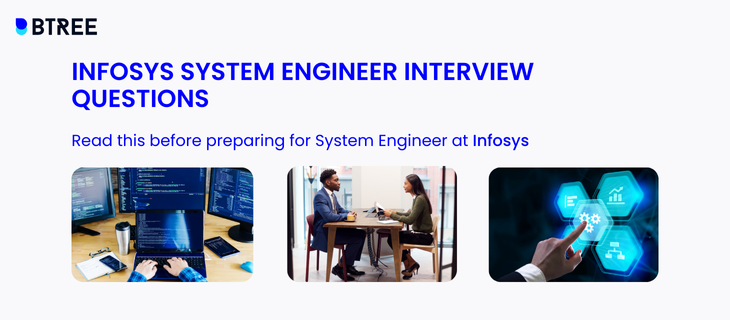PwC Interview Process
PwC conducts an online aptitude round that usually consists of three sections to assess the candidate. These are the sections:
Verbal Ability
In this section, the candidate’s command of the English language is evaluated. This section typically consists of questions that ask you to choose the right synonym and antonym, fill in the blanks with the right preposition, and so on. It may also include paragraph-based questions, in which a passage is provided and you must answer three to four questions based on it.
Numerical Ability
This section evaluates the candidate’s mathematical ability. Mathematical issues like speed and distance, profit and loss, permutations and combinations, probability, clocks, simple and compound interest, etc. are frequently addressed in the questions in this section.
Reasoning Ability
The candidate’s logical reasoning is assessed in this section. Finding the next term in a given series, matching the pattern, finding the odd one out, and so on are common topics in this section. This round will not include any coding questions.
Technical Round
Candidates will face a technical round based on their performance in the Aptitude Round. Even for a technology consultant role, there are numerous profiles available, such as SAP, Microsoft ERP, Oracle ERP, Data Analytics, Cybersecurity, and so on. This technical round focuses on both the technical aspects of the corresponding profile and general technical concepts. The interviewers will go over your resume thoroughly and may ask questions about previous projects and technologies mentioned in your resume. Before appearing for this round, you should thoroughly review your resume.
HR Round
The HR round will be the final round. The questions in this round will focus primarily on your resume, previous experiences, and general HR questions. This round also determines whether the candidate is a good fit for the company’s culture. Make sure to read the About PwC section and visit the company’s website to learn more about the company’s purpose and values. The following are the most frequently asked questions during an HR interview:
PwC HR Interview Questions
- What are the greatest professional strengths at PwC?
- Your co-worker highlights your mistake in front of everyone, how do you handle the situation?
- What education or training have you had that makes you fit for this profession at PwC?
- How do you evaluate success at PwC?
- How will you know our company?
- Are you able to relocate if required?
- What role do you see technology playing in this role?
- Do you prefer working in a team?
- Are you a good listener?
- Do you believe in talent or hard work?
PwC Interview Questions
This PWC Interview Questions and answers helps candidate to gain a real-time interview knowledge.
1. Describe merge sort. What is the merge sort’s time and space complexity?
A Divide & Conquer algorithm called Merge Sort is used to order an input (can be an array or linked list). It required splitting the input into two halves at each stage until there was only one element left, which was then combined to create a sorted input
There is no in-place algorithm for merge sort (which means you need to use extra space for sorting the input). The relative ordering of two identical elements in the input will be maintained in the sorted output because the merge sort algorithm is stable.
2. Determine whether a string is a palindrome or not.
Palindrome: If a string can be read the same way from the front (or) the back, it is said to be a palindrome. The reverse of a string is equal to the original string, in other words, if it is a palindrome.
{ int len = str.length(); int mid = len / 2; // Traverse until mid and swap characters from ends for (int i = 0; i < mid; i++) swap(str[i], str[len - i - 1]); return str; } bool isPalindrome(string a) { // This reverse the string string b = reverseString(a); // Check if reversed string and original string are the same return a == b; } int main() { string s1 = "BANANA"; string s2 = "MADAM"; cout s1 << is "<< (isPalindrome(s1) ? "NOT ": " ") <<" a PALINDROME\n"; cout s2<<" is "<< (isPalindrome(s2) ? "NOT ": "") <<" a PALINDROME\n"; }
Output
BANANA is NOT a PALINDROME MADAM is a PALINDROME
3. What contains volatile C?
When a variable is declared as volatile, the compiler is instructed not to optimize anything related to the variable and to always retrieve the variable’s value from memory.
For example, int run = 1; while(run) { // Do something and don't involve run variable at all }
Since the variable run is not used at all in the loop in this instance, the compiler can convert the while loop into a while loop (1). But a signal handler, an operating system, etc., can alter run. The compiler doesn’t perform this optimization if the variable is set to run as volatile.
The three main instances where volatile is employed (i.e., where a variable can change without intervention from the visible code) are:
- Access to hardware that physically alters the value (I/O mapped memory location).
- There is a concurrent thread using the same variable.
- A signal handler with the potential to modify the value.
4. What is the variation between a Binary Search Tree and a Binary Tree?
A binary tree is a tree that has two or fewer children per node. A node’s or its children’s potential value is limitless. When searching a binary tree, the tree must be completely traversed.
Binary Search Tree: Only nodes whose values are greater than the parent node’s value can be found in the right subtree of a node, and only nodes whose values are less than the parent node’s value can be found in the left subtree of a node. In the worst-case scenario, all that is required to search in a Binary Search Tree is to traverse its height.
5. Is it possible to print 1–100 without using loops?
We can use recursion to print 1–100 without using a loop.
#include iostream> void printVal(int i) { if(i > 100) return; printVal(++i); } int main() { int i = 1; printVal(i); }
PwC Interview Questions and Answers for Experienced
1. A dangling pointer is what? How do I approach it?
- A pointer pointing to a memory location that has been deleted is referred to as a dangling pointer.
- Initializing it to NULL will prevent a dangling pointer error.
- The pointer won’t be pointing anywhere by doing this.
2. Describe Bootstrap. What benefits does Bootstrap have over CSS?
- One of the most widely used, easily accessible, and open-source web development frameworks for creating responsive and mobile-friendly websites is Bootstrap.
- Mark Otto and Jacob Thornton created Bootstrap originally under the name Twitter Blueprint.
- The most recent version, Bootstrap 5, was made available on May 5, 2021.
- Even if they are unaware of the fundamental commands, web developers can build websites more quickly with the aid of Bootstrap.
- For creating responsive websites, Bootstrap consists of various HTML, CSS, and JS-based scripts.
3. Briefly describe cross-functional audits.
Cross-functional audits examine opportunities and risks that cut across various departments or functions within an organization. They offer a thorough and integrated view of an organization’s operations, procedures, and controls and point out areas that need cross-functional cooperation and coordination to be improved. Cross-functional audits can increase cooperation, thoroughly evaluate risks, and pinpoint opportunities for process improvement that call for such cooperation.
4. Which audit control procedures are there?
The policies and practices that an organization uses to make sure that its financial and operational information is accurate, dependable, and secure are referred to as audit control procedures. These processes are intended to recognize, evaluate, and reduce risks that might jeopardize the accuracy of financial or operational data within an organization.
5. What are a finance executive’s primary responsibilities and duties?
The management of an organization’s financial operations and ensuring adherence to financial regulations fall under the purview of a finance executive. A finance executive’s primary responsibilities and tasks might include budgeting, forecasting, managing financial transactions and reporting, controlling tax and accounting operations, and maintaining relationships with external stakeholders like investors, banks, and auditors. In order to support business decisions and ensure the organization’s financial stability and sustainability, they also offer financial guidance to the management team.
PwC Interview Experience
Samantha Matthau, currently employed by PricewaterhouseCoopers (PwC)
Just be yourself; there is no “crack” for the interview.
The Partner you conduct the interview with will discover the crack; pay attention to the following before the interview.
Give yourself a moment to calm down, and you’ll see how foolishly you’ve been scurrying about.
You will realize that you have spoken too much once you learn to be silent.
Being kind will make you realize that your harsh judgment of others was unnecessary.
And finally, if you are meant to have the role, you will get it!
Janagar Sundaramoorthy, Former Technical Lead Consultant at PricewaterhouseCoopers (PwC).
How do I succeed in the PWC (associate for CS graduates) interview?
make sure you are knowledgeable enough about the project you have listed on your resume. SQL, array, and OOPS fundamentals.
Rishav Giri is a senior consultant (2018–present) 4y at PricewaterhouseCoopers (PwC)
How do SAP professionals at PWC get hired?
For knowledgeable hires, the process is fairly simple. In most cases, there are two rounds.
Technical Round: It may take place over the phone or in person. We evaluate your technical expertise in-depth and thoroughly.
Partner Round: You will be contacted for Partner round after you pass the technical round. This round will either be a Vcon or face-to-face.
HR will get in touch with you to discuss salary and complete any remaining formalities if both rounds are successful.
Conclusion
PwC is a top company for people looking for stimulating and satisfying careers in the accounting and consulting fields. PwC provides its employees the chance to have a significant impact and affect change because of its dedication to professional development, commitment to diversity and inclusivity, and reputation for thought leadership. By properly preparing and practicing these PwC interview questions, you will be able to showcase your abilities.


